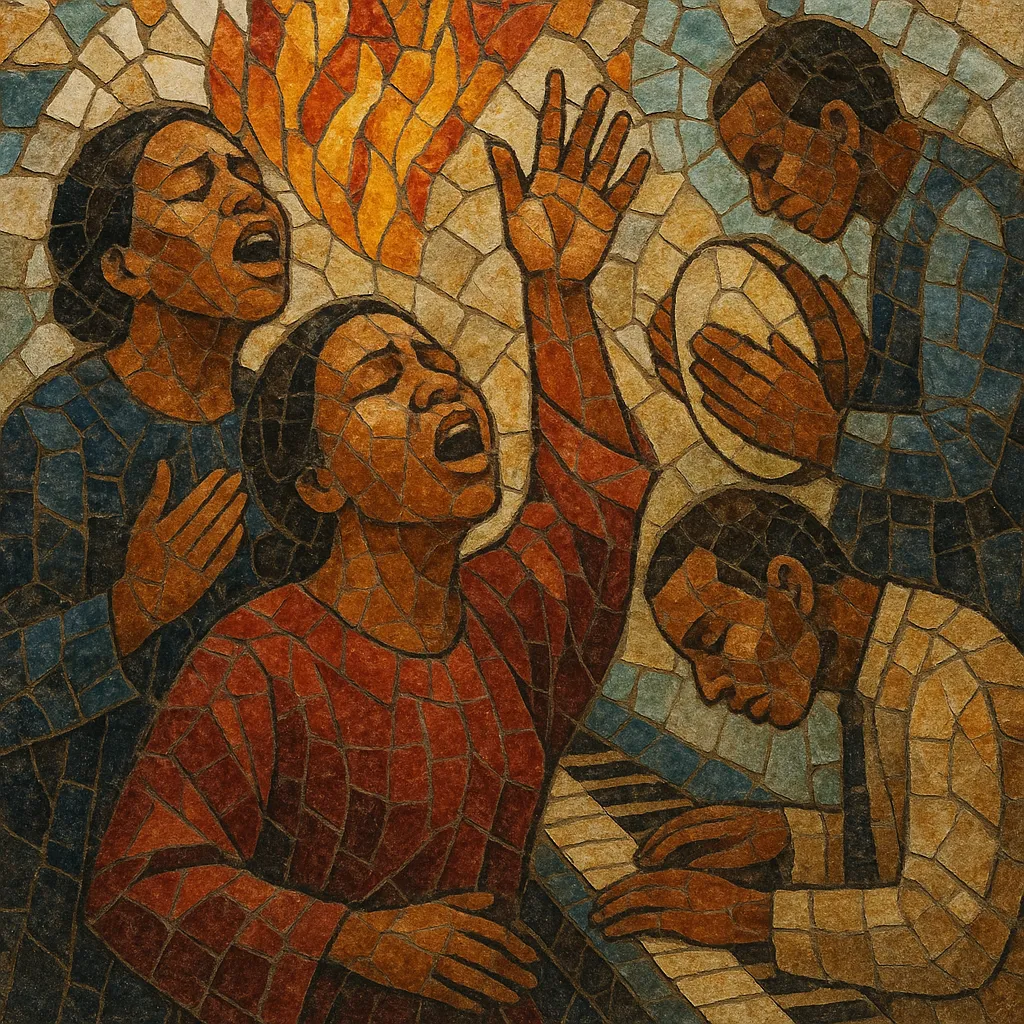
Pentecostal is a worship-centered musical style that grew out of early 20th-century Pentecostal and Holiness revivals in the United States. It blends African American spirituals, folk hymnody, and blues-inflected shouts with ecstatic congregational practices such as call-and-response, handclapping, dancing, and moments of free prayer or glossolalia.
Musically, Pentecostal services move fluidly between driving praise songs and slow, soaring worship ballads. Hallmarks include 12/8 and triplet feels, gospel chord language, extended vamps, rising key modulations, antiphonal choir-leader exchanges, and spontaneous spoken exhortations. Instrumentation ranges from small rhythm sections centered on Hammond organ, piano, bass, drums, and tambourine to large choirs and contemporary worship bands with electric guitars and modern production.
Pentecostal music emerged alongside the Pentecostal movement’s revivals, most famously the 1906 Azusa Street Revival in Los Angeles. Early services drew on Holiness hymnody, African American spirituals, shape‑note traditions, and the rhythmic vitality of blues-tinged congregational song. The emphasis on spontaneous, Spirit-led worship encouraged call-and-response singing, ecstatic shouting, and flexible song order.
As Pentecostal churches grew, their musical practices spread via tent meetings, radio, and traveling evangelists. Sanctified church ensembles crystallized around piano/organ, tambourines, and handclaps, with choirs supporting charismatic song leaders. Quartet traditions and testimonial songs began to codify stylistic traits such as extended vamps and modulations to heighten congregational response.
The Hammond organ, drum kit, and amplified ensembles became signature sonorities. COGIC (Church of God in Christ) conventions and choir competitions elevated arranging and vocal excellence, while artists and directors connected Pentecostal worship practice with the broader rise of modern gospel. Hard-driving praise numbers and lingering worship ballads both matured during this era.
The praise-and-worship movement professionalized songwriting for congregational use, and recordings helped songs circulate globally. Pentecostal and Charismatic churches popularized a stadium-scale worship band format, strong melodic hooks, and lyrical immediacy. International ministries and megachurches exported the sound worldwide, shaping contemporary Christian music across styles and languages.
Modern Pentecostal music embraces pop, R&B, rock, and electronic production while preserving congregational call-and-response and the climactic "praise break" (shout music) vamp. Streaming, social media, and global touring reinforce a transnational repertoire in which local churches blend regional rhythms with core Pentecostal worship aesthetics.

